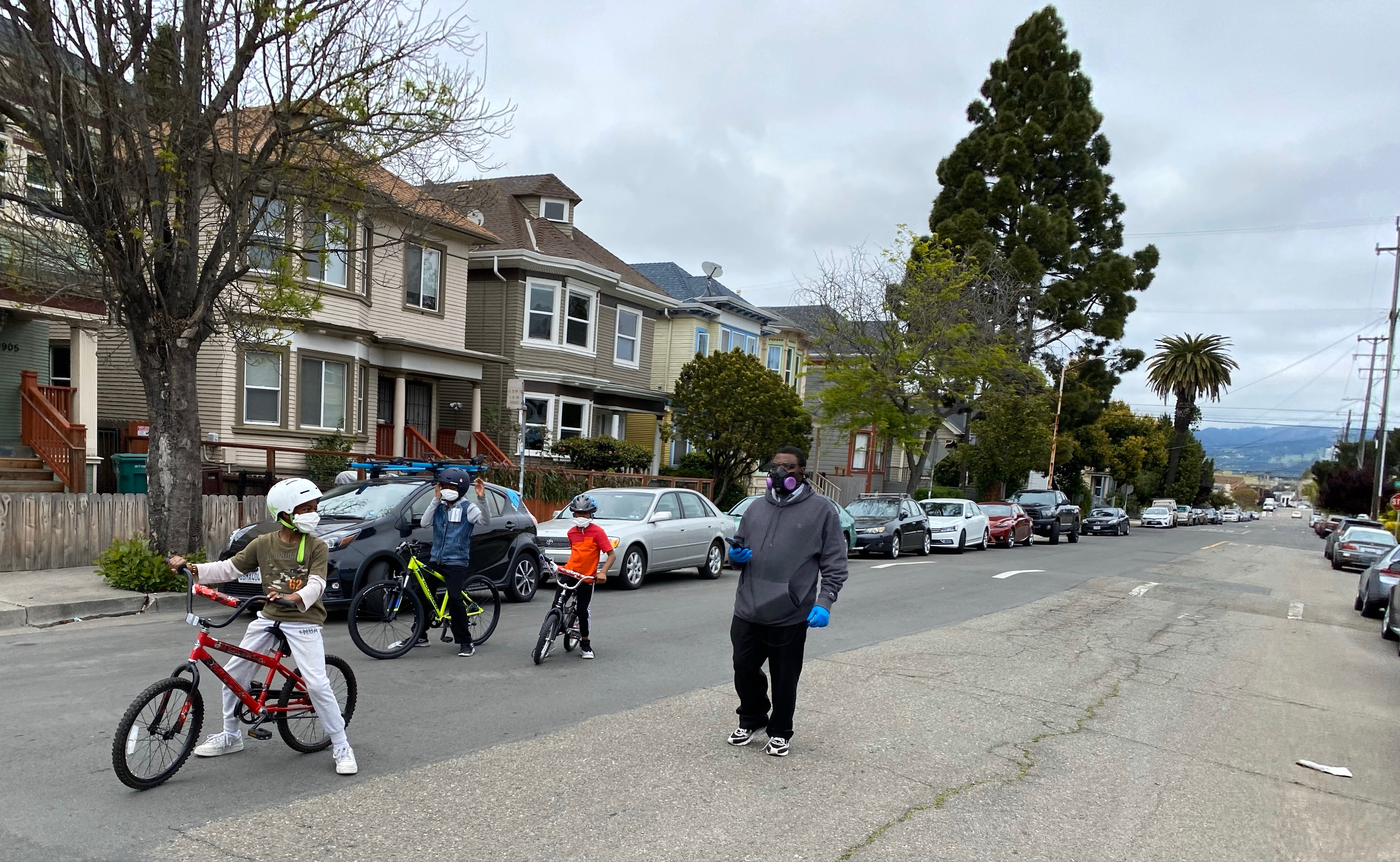Julia Foote and Josh Lee
 This pandemic certainly has us navigating a lot of new territory, whether it be the novel grab-bag of emotions that come with facing a global crisis, or new logistical challenges such as juggling work with childcare or socially distanced grocery runs. Something that has particularly stood out is how we now physically navigate the world outside our front doors. With more people seeking solace outdoors, we find ourselves preoccupied with maintaining at least six feet of distance with our neighbors — zig-zagging into and across the street to keep out of each other’s way. While parks and trails are crowded or closed, there are fewer opportunities to get outdoors safely. Those options are limited even further for under-resourced and underserved communities with already poor access to green space.
This pandemic certainly has us navigating a lot of new territory, whether it be the novel grab-bag of emotions that come with facing a global crisis, or new logistical challenges such as juggling work with childcare or socially distanced grocery runs. Something that has particularly stood out is how we now physically navigate the world outside our front doors. With more people seeking solace outdoors, we find ourselves preoccupied with maintaining at least six feet of distance with our neighbors — zig-zagging into and across the street to keep out of each other’s way. While parks and trails are crowded or closed, there are fewer opportunities to get outdoors safely. Those options are limited even further for under-resourced and underserved communities with already poor access to green space.
To meet people’s recreational and spatial needs, “Slow Streets” programs have started up in cities around the world. These programs help support residents’ safe, socially distant physical activity during COVID-19 by closing streets to through traffic. Ideally, these programs center equity by reducing barriers to recreation and safe mobility for the most vulnerable communities.
In the Bay Area, Oakland has been leading the way on these efforts. The city closed “all existing and proposed Neighborhood Bike Routes” to through traffic, which accounts for nearly 10% of all Oakland Streets, so that people can more comfortably walk, roll, and bike throughout the city. San Francisco also launched a Slow Streets program by targeting “lower-traffic residential streets that connect neighbors to essential services in the absence of Muni service.” Alameda followed suit by starting pilot “soft” closures of portions of Pacific and Versailles Avenues, and Emeryville closed portions of Doyle Street to help promote socially distant mobility and pedestrian safety.
Pedestrian-first approaches to transportation aren’t new. Unfortunately, they just aren’t the norm. COVID-19 has highlighted the need for safe networks of streets to walk and bike on; but what if limiting car travel in our cities extended beyond a response to this crisis?
Earlier this year, San Francisco made Market Street car-free as part of its Better Market Street program and the results thus far have been incredible. Once death-defying bike commutes and hazardous crosswalks have become markedly—or, rather, Market-ly—safer. Car-free Market Street has simultaneously improved conditions for walking and cycling and increased transit reliability, making those modes of transit more appealing, while making driving less appealing. With it, San Francisco joined dozens of other cities limiting, or entirely banning, cars from certain areas to help promote other forms of transit, increase road safety, and address pollution.
Today’s Slow Streets initiatives continue the momentum of programs like Better Market Street, and show that cities are no longer submitting to the rule of automobiles. Pedestrians and cyclists deserve safer cities both now and beyond our public health crisis.
These closures are a necessary and innovative tool to respond to the particular needs of COVID-19 and social distancing measures. We should not lose sight of our ability to develop these kinds of rapid responses to emergencies as we continue to face not only this pandemic, but also our ongoing housing and climate crises.
Slow Streets programs are just one response to COVID-19 that has applicability outside of the pandemic. Emergency housing for our homeless, stronger financial support for our jobless, and appropriate compensation for our essential workers should not only happen during an international emergency, but must continue as we recover and beyond.
If your city has not yet put forward a Slow Streets plan, use our online action form at bit.ly/slowmystreets to ask your Mayor to make room for walking, biking, and rolling during the COVID-19 pandemic! Together we can call on our elected officials to demand that they put the health and safety of our communities first.
Photo courtesy City of Oakland.